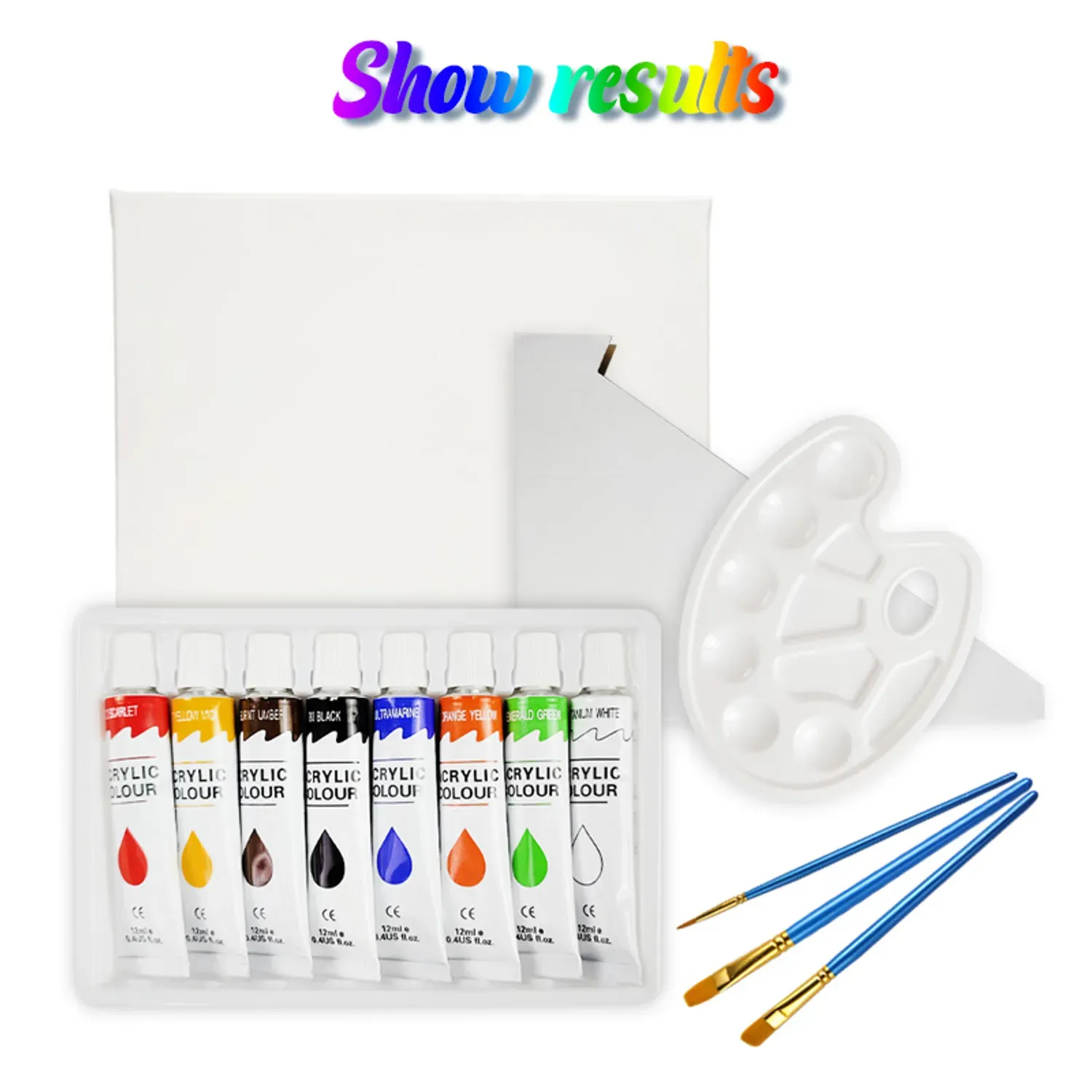betty@kaihong888.com

Get A Quote
What Are the Pros and Cons of Working with Acrylic Paint?
Understanding Acrylic Paint
Acrylic paint consists of pigments suspended in an acrylic emulsion. What sets it apart is its water-soluble nature and rapid drying time, which renders it water-resistant once dry. This unique formulation allows for a wide range of artistic applications and techniques.
Versatility and Range of Applications
Acrylic paint offers unparalleled versatility, allowing artists to create on various surfaces, including canvas, wood, paper, and even unconventional materials like plastic and metal. Its adaptability enables artists to achieve diverse effects, ranging from the translucent qualities of watercolor to the texture and depth reminiscent of oil paint.
Comparison with Traditional Paint Mediums
When compared to traditional mediums like oil and watercolor, acrylic paint stands out for its modern characteristics. Unlike oil paints that require meticulous mixing, acrylics come ready-to-use, offering convenience without compromising quality. Additionally, while watercolors demand precision and delicacy, acrylics provide a forgiving canvas, allowing artists to experiment with confidence.
By understanding the composition and versatility of acrylic paint, artists can harness its full potential to bring their creative visions to life. Whether replicating the luminosity of watercolors or the richness of oils, acrylic paint offers a dynamic palette for artistic expression.
Exploring Traditional Acrylic Paint
Characteristics and Advantages
Traditional acrylic paint boasts several advantages that make it a favorite among artists. Firstly, its rapid drying time allows for efficient workflow, enabling artists to layer and build upon their work without delay. Moreover, the water-based nature of acrylics facilitates easy cleanup with just water and soap, making it a safer and more environmentally friendly option. Additionally, its versatility extends to various surfaces, from canvas to wood, providing artists with ample creative freedom.
Drawbacks and Concerns
Despite its many advantages, traditional acrylic paint comes with some drawbacks and concerns. One concern is the presence of toxins in certain pigments, which can pose health risks during prolonged exposure. Furthermore, while acrylics offer versatility, they may not blend as seamlessly as oil paints, limiting certain artistic techniques. Additionally, there are concerns regarding the long-term durability of acrylic paintings, as their relatively short history leaves questions about their longevity unanswered.
Unveiling Modern Acrylic Paint

Features and Benefits
Modern acrylic paint builds upon the foundation of traditional acrylics, offering enhanced features and benefits. One notable improvement is the extended drying time, providing artists with more flexibility to work and manipulate the paint on the canvas. Additionally, modern acrylics can be reactivated after drying, allowing for adjustments and corrections even after the initial application. Moreover, advancements in formulation have resulted in acrylic paints that boast improved durability and flexibility, promising long-lasting and resilient artwork.
Limitations and Considerations
Despite its advancements, modern acrylic paint comes with its own set of limitations and considerations. While extended drying times offer flexibility, artists must be patient and wait between layers to avoid smudging or blending unintentionally. Furthermore, there may be concerns regarding color consistency and reactivation over time, as prolonged exposure to environmental factors could affect the paint's properties. Thus, artists must carefully consider these factors when choosing and working with modern acrylic paints.
Weighing the Pros and Cons
Advantages of Working with Acrylic Paint
Acrylic paint offers a multitude of advantages for artists, making it a favored choice for many.
Firstly, its versatility on various surfaces stands out. Unlike some other mediums, acrylic paint adheres well to a wide range of materials including canvas, wood, paper, fabric, and even metal or plastic. This adaptability allows artists to explore different artistic expressions and experiment with unconventional surfaces.
Another significant advantage is the quick drying time associated with acrylic paint. Unlike oil paints that can take days or even weeks to fully dry, acrylic paint dries rapidly, often within minutes to hours depending on the thickness of application. This fast drying time enables artists to work efficiently, layer colors, and make corrections without lengthy waiting periods between stages.
Additionally, the water-solubility of acrylic paint simplifies the cleanup process. Artists can easily clean their brushes and palettes with water, eliminating the need for harsh solvents or thinners. This not only streamlines the artistic process but also reduces exposure to potentially harmful chemicals, making acrylic paint a safer option for artists and the environment.
Disadvantages and Challenges
Despite its numerous advantages, acrylic paint also presents some challenges and limitations that artists need to consider.
One common issue is the darkening of colors upon drying. Acrylic paint tends to dry slightly darker than when it's wet, which can affect color accuracy and require adjustments during the painting process. Artists may need to account for this shift in color when mixing and applying acrylic paints.
Another challenge is the fast drying nature of acrylic paint. While quick drying can be advantageous for efficiency, it also means that artists must work swiftly to blend colors and create smooth transitions. The limited working time may pose challenges, especially for beginners or artists who prefer a more gradual approach to painting.
Furthermore, removing dried paint from brushes and clothing can be difficult. Once acrylic paint dries, it forms a tough, water-resistant film that adheres firmly to surfaces. This can make cleanup challenging, requiring additional time and effort to thoroughly clean brushes and remove paint stains from clothing.
While acrylic paint offers many benefits such as versatility, quick drying time, and easy cleanup, it's important for artists to be aware of its limitations and challenges. By understanding both the advantages and disadvantages of working with acrylic paint, artists can make informed decisions and maximize their creative potential.
Conclusion
Despite the drawbacks, we encourage readers to experiment with acrylic paint and form their own opinions. Art is subjective, and each artist's journey is unique. Embrace the versatility and flexibility of acrylic paint to unleash your creativity and explore new artistic possibilities.
If you're ready to embark on your acrylic painting journey or expand your artistic repertoire, we invite you to explore the wide range of acrylic paint products available at KHY. From beginner-friendly sets to professional-grade paints and mediums, KHY offers everything you need to bring your artistic visions to life. Shop with us and elevate your acrylic painting experience today!
